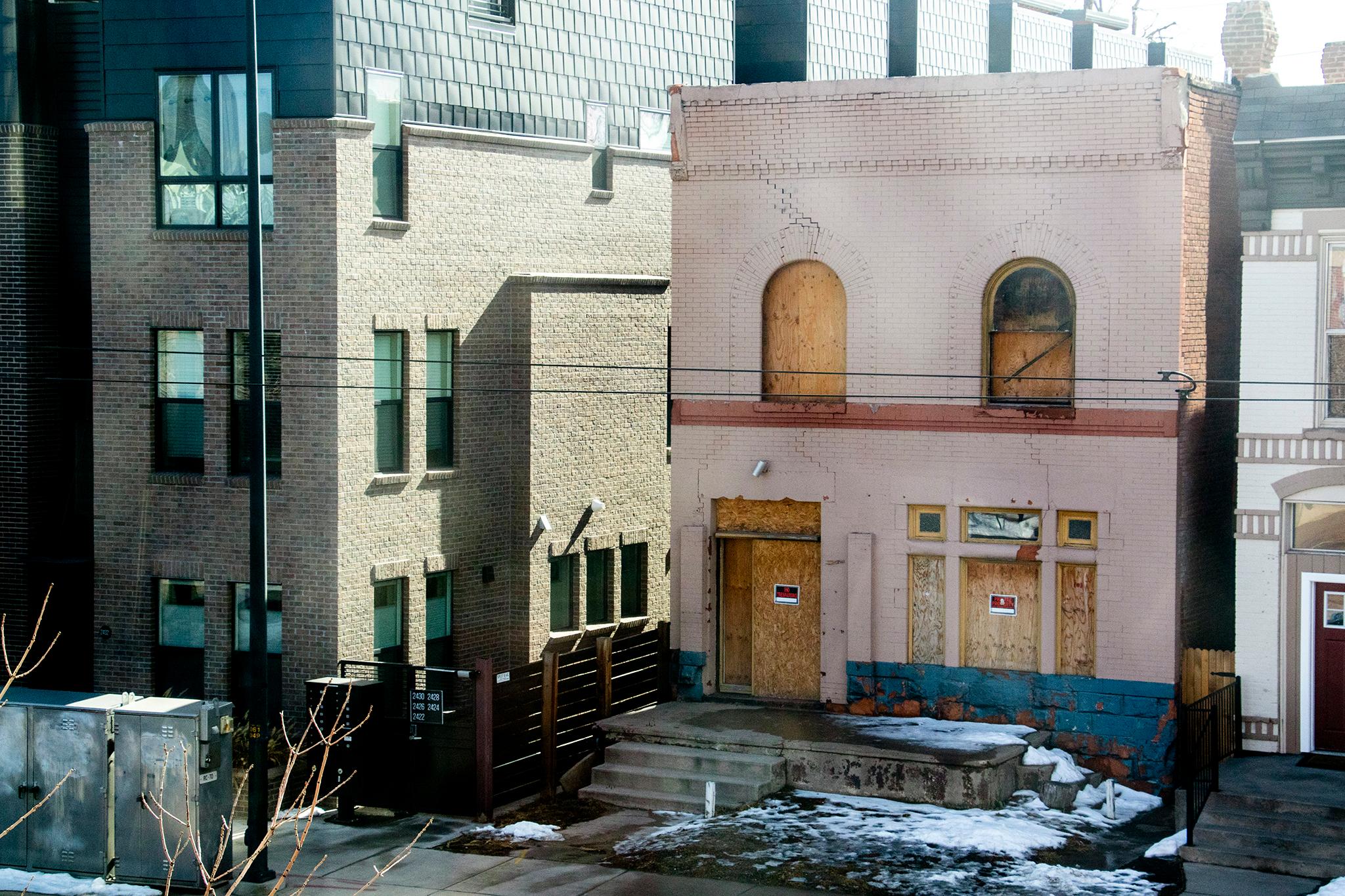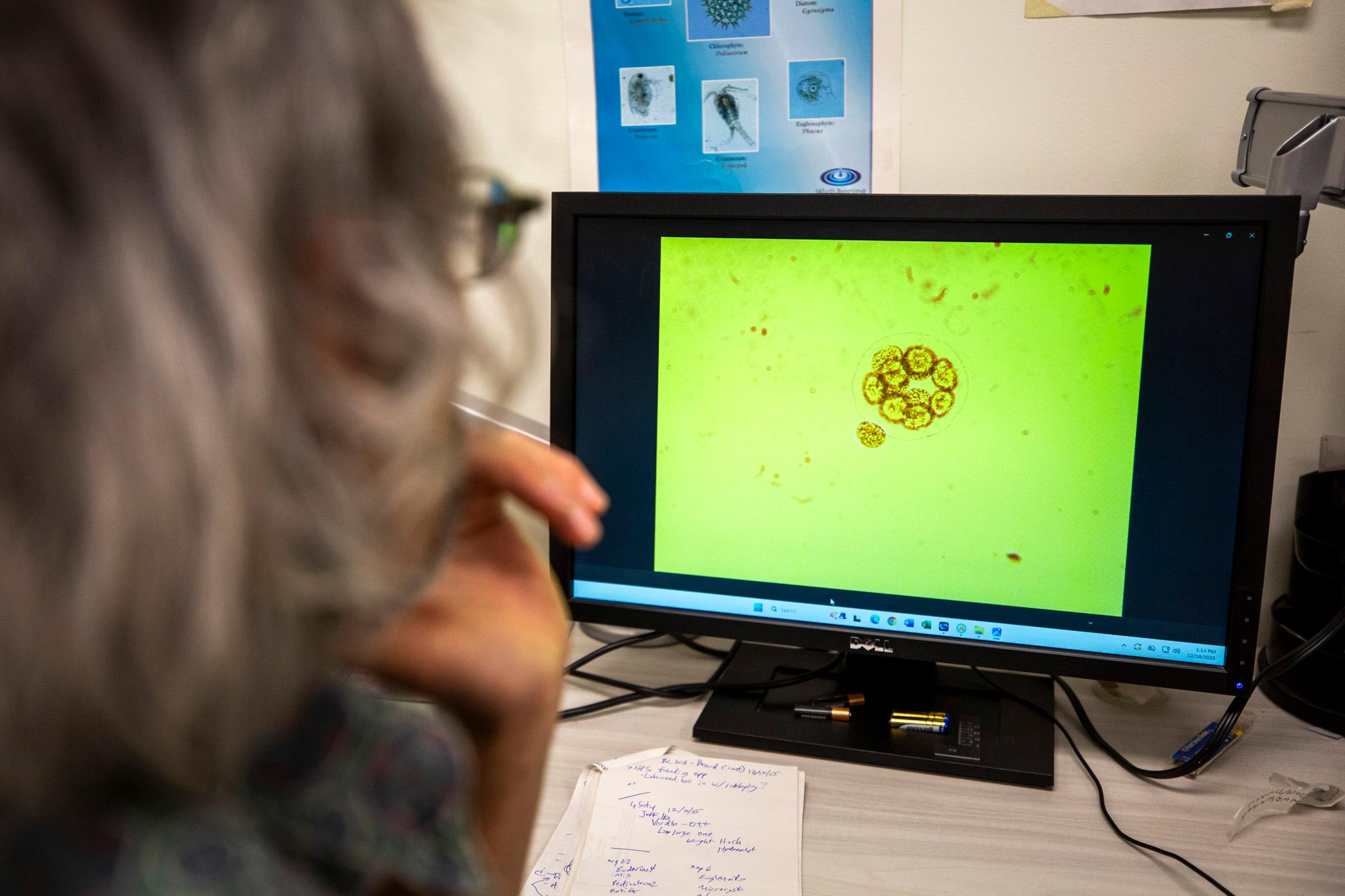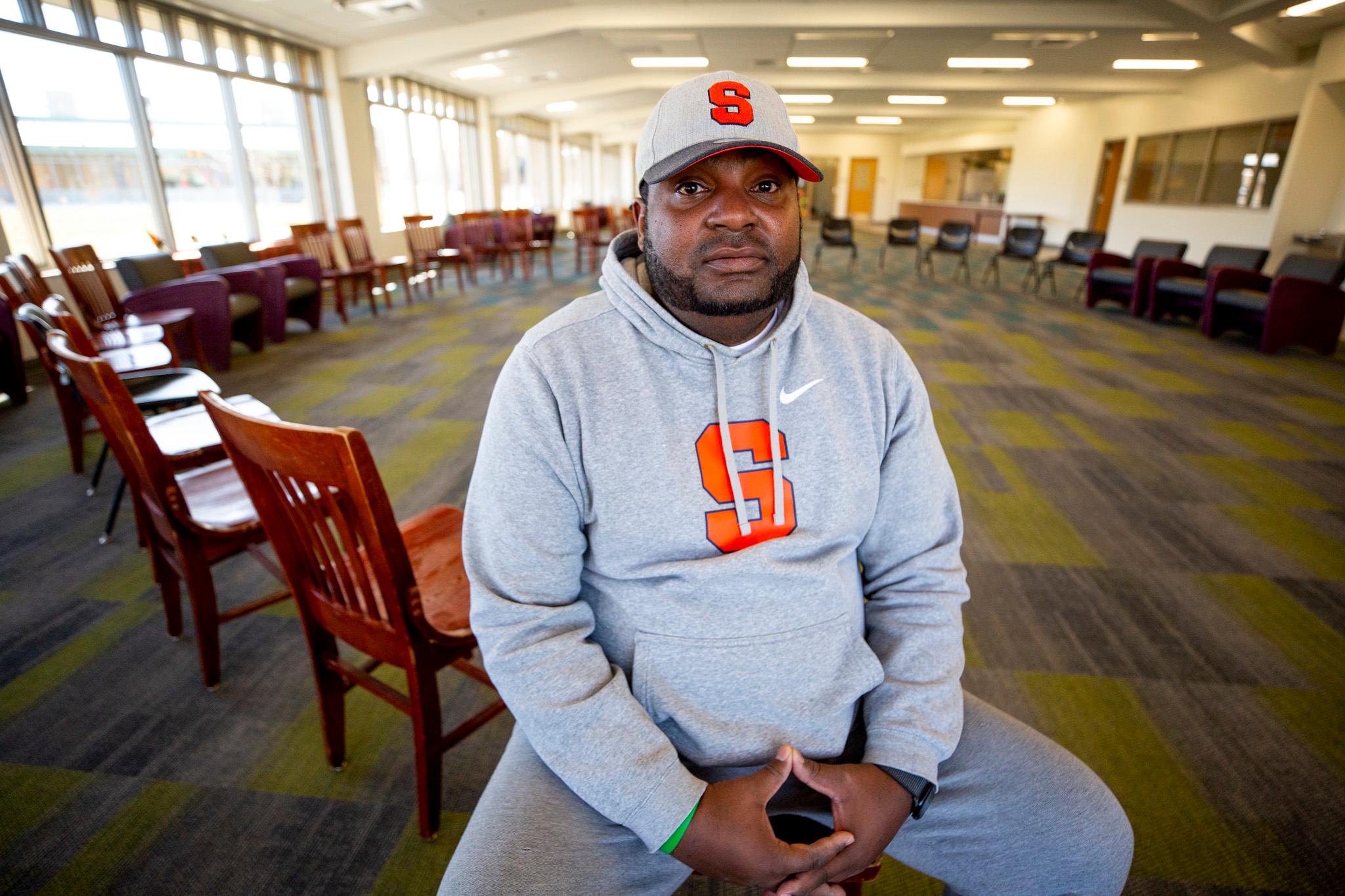Living in homelessness often means walking in homelessness. Cold and wet take their toll on people spending hours a day on their feet searching for shelter, food, work. A slight cut on a toe or a heal rubbed raw can escalate into a serious infection for someone without easy access to a bathroom to keep clean.
At the Colorado Coalition for the Homeless, a nurse might say, "If you want to put your feet in some warm water, just do that," Kaylanne Larrabee Chandler found when she took a job at the coalition's clinic on Stout Street a few years ago.
"It's breaking down barriers, trying to bring in human-to-human contact," said Larrabee Chandler, describing both the clinic's foot-care regime and the philosophy by which she and her housemates were living at the time, just a few blocks away at the Catholic Worker house on Welton Street.
For 38 years, volunteers like Larrabee Chandler welcomed and supported people experiencing homelessness at 2420 Welton. They followed the model that journalist Dorothy Day and Catholic social activist Peter Maurin created in 1930s New York. In Denver, the result was a sort of artisanal workshop that produced do-gooders in small batches. Founders of The Gathering Place, the Women's Bean Project and SAME Café have ties to that rambling Catholic Worker house in Five Points. More recently, former Catholic Workers have had a hand in tiny homes, urban gardens and Denver Homeless Out Loud. Larrabee Chandler, now nursing director for the Colorado Coalition for the Homeless, is among several generations of leaders in housing and hunger for whom Denver can thank the Catholic Worker movement.
"It's so wonderful to get to be this age and see all that the Catholic Worker connected people are doing in the city," said Anna Koop. The 79-year-old nun started Denver's Catholic Worker house and has for decades been a quiet role model, drawing like-minded people to her and helping them share ideas and define and reach ambitious goals. Her life demonstrates that asking questions of yourself can lead, if not to answers, at least to actions that can create connections and transform communities.
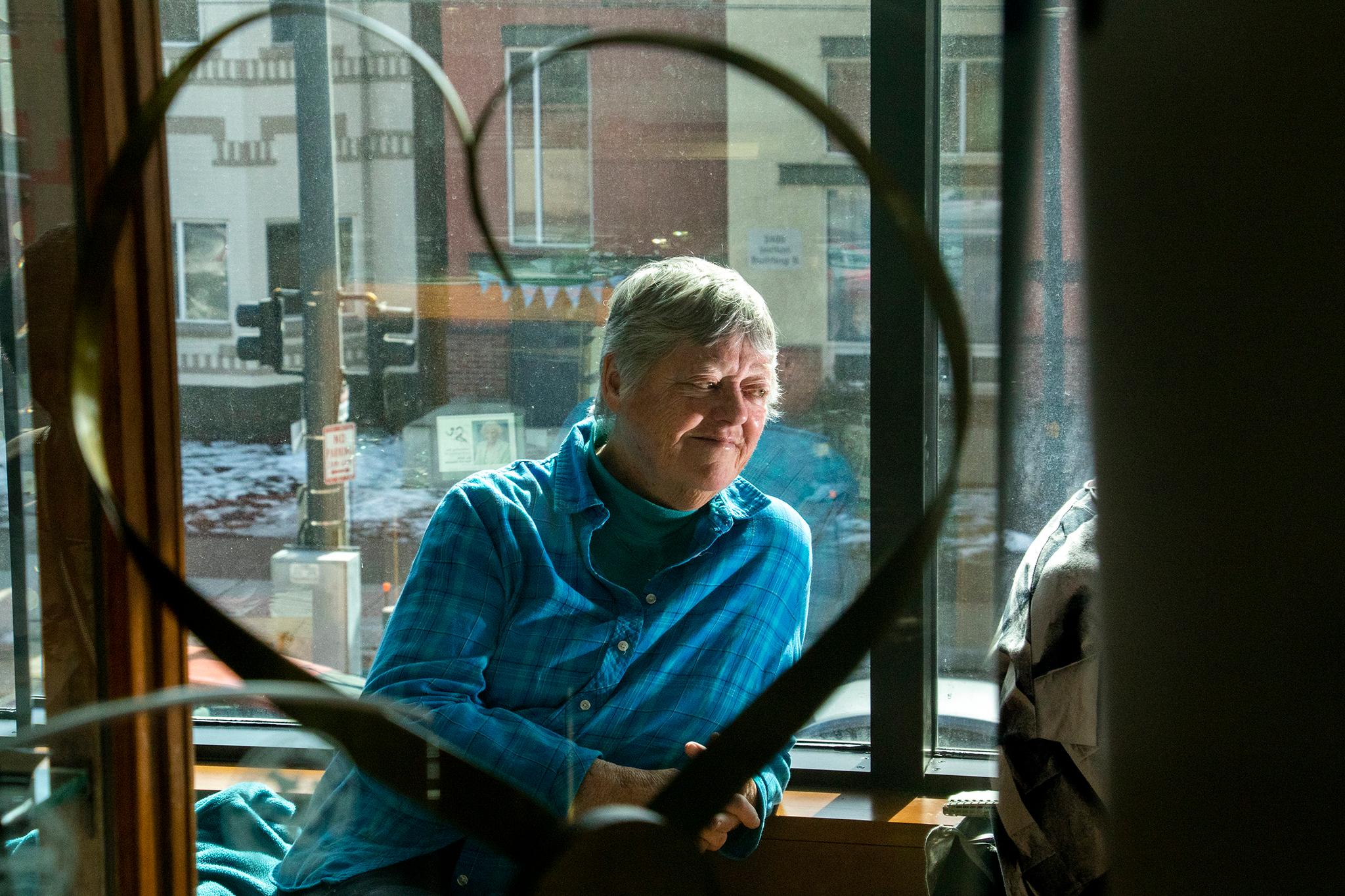
"Some come to live their ideals..."
-- Dorothy Day in her 1963 history of the Catholic Worker movement, Loaves and Fishes
Larrabee Chandler, who grew up in Littleton, and her husband Cole Chandler, a Texan, first met Koop a few years ago. They had been married a year. Chandler was just finishing his master's in divinity and Larrabee Chandler had her RN. They had read the work of Dorothy Day as undergraduates at Baylor and Chandler had even lived in a communal house he'd modeled on Catholic Worker homes, complete with a room for people living in homelessness.
They had found Koop's house on the Web and arrived, after emailing, with their resumes, expecting to be interviewed for a position. They did not know then that at the house, if a room was open when someone experiencing homelessness needed it, they got it. The same applied to people who needed a place to serve.
"People who were drawn to the movement were welcomed. They were always people who had wonderful values and we knew would care about the guests," Koop said. "For a lot of the young people who came to the Worker, it was a training time for them. They were learning how to place their values in ways that had meaning for them."
Larrabee Chandler and Cole Chandler lived for six months in the house. It was long enough for Larrabee Chandler to meet a visitor to the house who was with the Colorado Coalition for the Homeless and told her about a clinic opening.
They had planned on a year, but quickly found they needed a space of their own. Larrabee Chandler said she and her husband hesitated to tell their housemates they wanted to leave. The news "was received with love and care."
They learned, she said, that at 2420 Welton, "if somebody says something that they need, why would someone say, 'You don't need that'?"
It was one of many lessons they took away. Cole Chandler, who still regularly leads prayers at Catholic Worker gatherings even though he and Larrabee Chandler are not Catholic, helped found the Colorado Village Collaborative in 2017. The nonprofit operates the Beloved Community Village, a collection of tiny homes that offer people experiencing homelessness an alternative to shelters. Residents of the tiny homes are encouraged to engage with one another and their neighbors. The emphasis on building a community of equals who respect and support one another is reminiscent of life at the Catholic Worker house.
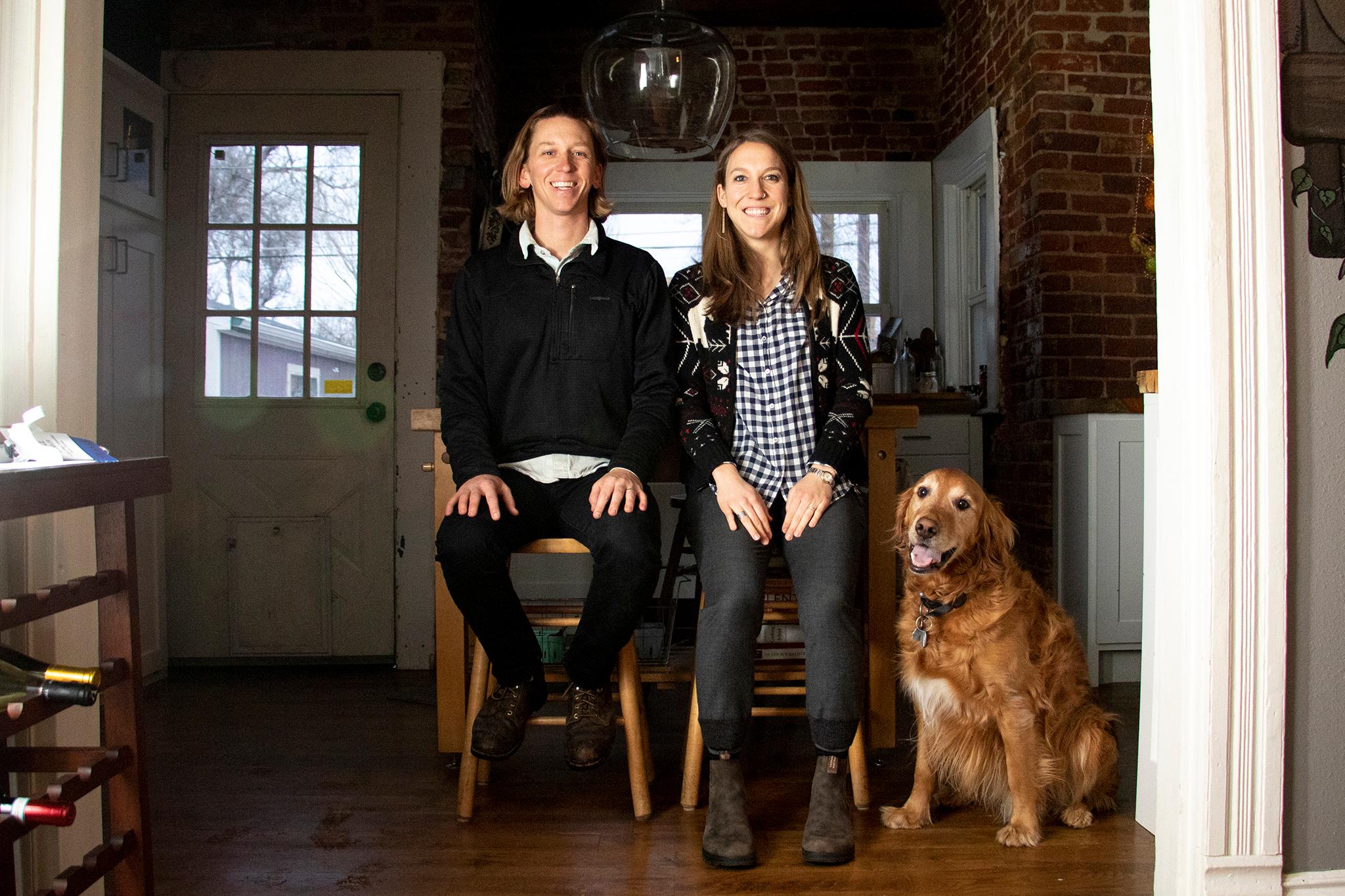
The first house in New York was, arguably, the former barbershop that served as the offices of The Catholic Worker, a newspaper that first went on sale on May Day, 1933 in Union Square. Day, who died in 1980, was a veteran journalist from a family of newspapermen who started The Catholic Worker at the suggestion of Maurin to report on the social ills of the day. It also was a platform for Maurin, who died in 1949, to write about his prescription for addressing those ills: bringing people together to help one another in a kind of religious-infused socialism.
"Really, the Catholic Worker movement is kind of the left wing of the Catholic Church," Koop said. "But still very devotedly saying at the core of our activities are the gospels and our faith."
Here's Day describing meeting one of the men beaten down by the Depression who would end up hawking her newspaper:
"I remember how he came in the first time, groaning and shouting, and, when I asked what we could do for him, he bellowed, 'I'd like to soak my feet!' He had been walking the streets all day, looking for a job. His shoes were worn and shabby and did not fit him, and since it had been raining, they were wet and shrunken besides. I brought him out a washtub of hot water."
In addition to foot care, people could drop in at the Worker for a meal, a cup of coffee, a moment of conversation. A more formal version of what Maurin called hospitality houses was established later in a tenement block on Mott Street. The Worker's stories helped spread the idea to San Francisco, Cleveland, Pittsburgh and elsewhere. Each house was different, determined by local needs and leadership. The newspaper continues to be published and Denver isn't the only city that still has a house.
"Work is also prayer."
-- Day, Loaves and Fishes
Koop once met Day at the New York Catholic Worker house. When Day visited Denver a few years before she died, the writer and activist stayed with members of Koop's Loretto Community and Koop was able to spend more time with her. Loretto sisters are known for their work among the poor and oppressed. That's part of what drew Koop to the order.
"One of our mottoes is, 'We work for justice and act for peace because the gospel urges us to do so,'" Koop said.
Koop remembers being drawn to religion and spirituality as a young child in Minneapolis. She went to a Catholic college, St. Catherine's in St. Paul. She drifted a bit after graduating with a degree in sociology. During a year living with one of her brothers in Germany, where he was with the U.S. Information Agency, she worked for a time at the PX.
"At that point, I had no idea how anti-government I would be," said Koop, who would later protest nuclear weapons at Rocky Flats and whose heroes include activist and scholar Angela Davis and Democracy Now's Amy Goodman.
While living with her brother, Koop learned of friends who were planning to move to Denver.
"I came out here to ski," she said. "Not the most religious of motivations."
But she also got a job at Catholic Charities, which after a year sent her to the Catholic University of America in Washington. In 1964 she returned to Denver with a master's in social work. For the next 13 years she served Catholic Charities in a variety of positions, including creating an advocacy department that focused on housing and homelessness.
Along the way, she got to know Denver's Loretto order. And a church she loved but had seen as too hierarchical began to open up.
"Structure and those kinds of things have never been that terribly attractive to me," said Koop, who wears hiking shoes and bright plaid blouses, not a habit. "I came out here. Vatican II happened. I really saw the Loretto community and they were exciting to me."
She took her first vows in 1971. Asked when she took her final vows, Koop responded immediately that it was on the Feast of St. Francis, Oct. 4. It took her a little longer to pin down the year: 1987.
The long gap between first and final vows "was characteristic of a lot of the young nuns at that time," she said. "In my case, I felt like the first vows were final vows."
She'd been busy between vows. Her work with Catholic Charities had led to an appointment to a mayoral task force on housing alongside politicians, real estate entrepreneurs, developers.
"There weren't a lot of homeless people at the table," she said.
She came to believe those who were at the table "were not interested in the people I was interested in. If I wanted them to have something, I'd have to provide it myself."
"It's the poor that are suffering. I've got to do something."
-- Day, in her 1952 autobiography The Long Loneliness
"It was my mission, my passion to live with homeless people," Koop said. "Hopefully with some kind of equity. They're not just people I'm taking care of. But friends with whom I'm living."
And so she found 2420 Welton and opened Denver's Catholic Worker house in 1978. When she took her final vows, friends celebrated by giving her toilet paper and other supplies for the house.
Rent in the early years was $350 a month. That went up to $550 after the first landlord sold to a new owner, who never raised the rent again in exchange for relying on Catholic Workers to keep up maintenance. A fire in 2016 forced Koop to relocate not far away. Finding a new house would have been difficult in a gentrifying corner of Denver if the Catholic Worker movement hadn't already bought a row of late 19th-century homes along 26th Street to rent at affordable rates. What has been difficult has been securing official permission to operate as a kind of alternative to a shelter. Koop didn't bother to seek such permission in 1978, but the city has changed and neighbors these days raise questions.
Koop lives in the meantime in a room in one of the 26th Street houses. Two former residents of the original Catholic Worker hospitality house live next door to her in what all three envision as the new Catholic Worker home. It is outfitted with plants, comfortable second-hand furniture and a long dining table a friend made for the old house. Day and Maurin are featured in photos and prints on the walls. As is the late Vincent Harding, a theologian who taught at the University of Denver and once regularly stopped by 2420 Welton. At Koop's invitation, he held a public discussion with Davis as part of the Loretto order's 200th anniversary celebrations in Denver in 2012. Davis, as Day had earlier, stayed with Loretto sisters during her time in Denver.
Koop is patient, confident she soon will be welcoming people who have nowhere else to go into the 26th Street house.
Brad Birky remembers Koop's quiet confidence as inspiring.
"She was so nonchalant that you could go out and change the world a little bit at a time," he said. "She had no fear."
"And not only was she that straightforward, she could point you to five different people she knew really well who had resources to help you along the way."

Birky and his wife Libby in 2006 opened SAME Café, an East Colfax restaurant where the needy pay what they can -- SAME stands for So All May Eat -- for a meal. Before opening the café, which depends on donations and volunteers as well as what diners can pay, the Birkys volunteered at 2420 Welton.
Shortly after jobs brought the Illinois couple to Denver, they learned an old friend of Libby Birky was in town as well and was volunteering at the Catholic Worker house. Libby Birky had grown up in a Catholic family and knew of Day's legacy. Her husband, a Mennonite, did not know Day but had an upbringing similar to his wife's that emphasized serving others.
In 2002, the Birkys began volunteering at 2420 Welton, spending every Tuesday at the house cooking meals and answering phones to give live-in Workers an evening off. Brad Birky would walk over from his IT job downtown. Libby Birky would leave the elementary school where she was teaching, pick up groceries and drive to Welton Street.
"We measured time by Tuesdays," Libby Birky said.
"The only answer to this life, to the loneliness we are all bound to feel, is community."
-- Day, The Long Loneliness
Libby Birky recalled lingering at the dinner table talking with guests for hours, then suddenly realizing they should clean up the kitchen so the live-in workers wouldn't have to return to a mess.
"They were really a community. They cared about connecting," Libby Birky said.
Her husband said Catholic Worker dinner conversations were among the sparks that led him and his wife to think about how they could address food insecurity in larger ways. They learned about a restaurant in Utah with a model they tweaked for SAME. Their goal is for those who are able to pay to benefit from a sense of community and sharing at SAME, as the couple did at the Catholic Worker house.
Like Libby Birky, Sarah Leach grew up Catholic and hearing about Day. But while Libby Birky grew up in Illinois, Leach grew up in the Denver suburbs, attending Regis High School. She later went away to a Jesuit school, St. Louis University, where she earned a bachelor's in theology. She and a friend volunteered a few hours a week at St. Louis's Catholic Worker house.
"That's how I started to get to know people who were living in community," she said.
As graduation neared she knew she wanted to return to Denver, but was unsure of her next step. She got on the Catholic Worker web site and discovered Denver also had a Catholic Worker house. She sent an email, found a spot was available and moved in in 2011.
In St. Louis, Leach had questioned whether someone from a middle-class background could or should choose to be poor. She knew she could always look to her parents in Parker. But she said she did learn the value of living simply. And in her year and a half in Five Points, the theologian started to learn how to garden.
"And have been gardening every since," she said.
Maurin, the activist-philosopher behind the first Worker house, had wanted gardens and farms alongside the houses to ensure self-sufficiency. Some of those early attempts struggled because the farmers had more ideals than skills, a challenge for Leach as well.
When she left the house, it was to find steady work and learn more about urban farming.
"For me, within the house, there was a lot of spaciousness to think about, 'What can I do and how do I want to be?'" Leach said. She added that living with people who had been hungry and on the streets added an urgency to those questions.
Ensuring people in the city have access to fresh, nutritious and affordable food has become her calling. She works with groups such as Groundwork Denver, a nonprofit with programs that include a network of urban farms, produce stands and agriculture classes.
"I moved gradually away from the Worker. But my roots are still there," Leach said. When she heard about the fire in 2016, she rushed over, stopping first at a bagel shop to pick up supplies.
"Someone said people were hungry," she said.
"Attempting to live in the spirit of poverty certainly does not relieve us of practical problems."
-- Day, Loaves and Fishes
In the mid-1980s when Kathy Carfrae arrived at the University of Denver to study social work, she told her professors she wanted to work with people experiencing homelessness.
"They gave me some options. And one of them was Anna Koop," Carfrae said. "It was the perfect fit."
"I don't have roots in the Catholic Church, but I adore the Catholic Worker," said Carfrae, who was raised Lutheran.
Carfrae spends 16 to 20 hours a week at 2420 Welton, cooking meals, answering phones. As Leach would find a generation later, living with people in crisis was instructive. Carfrae was especially struck by stories she was hearing from women and children coming out of the shelter system. While they could find beds at night, they often struggled to find safe and comfortable places during the day.
"Women and kids would be hanging out at McDonald's," she said.
The year after her Catholic Worker internship, she and a fellow social work student, Toni Schmid, started The Gathering Place. The day shelter offered refuge and a meal to women and children experiencing homelessness. Today, services at The Gathering Place include GED study sessions, resume counseling and medical screenings.
"We were young. Naive. Idealistic. Maybe a little crazy," Carfrae said. "Anna Koop was one of those people surrounding us saying, 'Yeah, do it. Don't think you can't.'"
Koop joined the first board of directors for The Gathering Place.
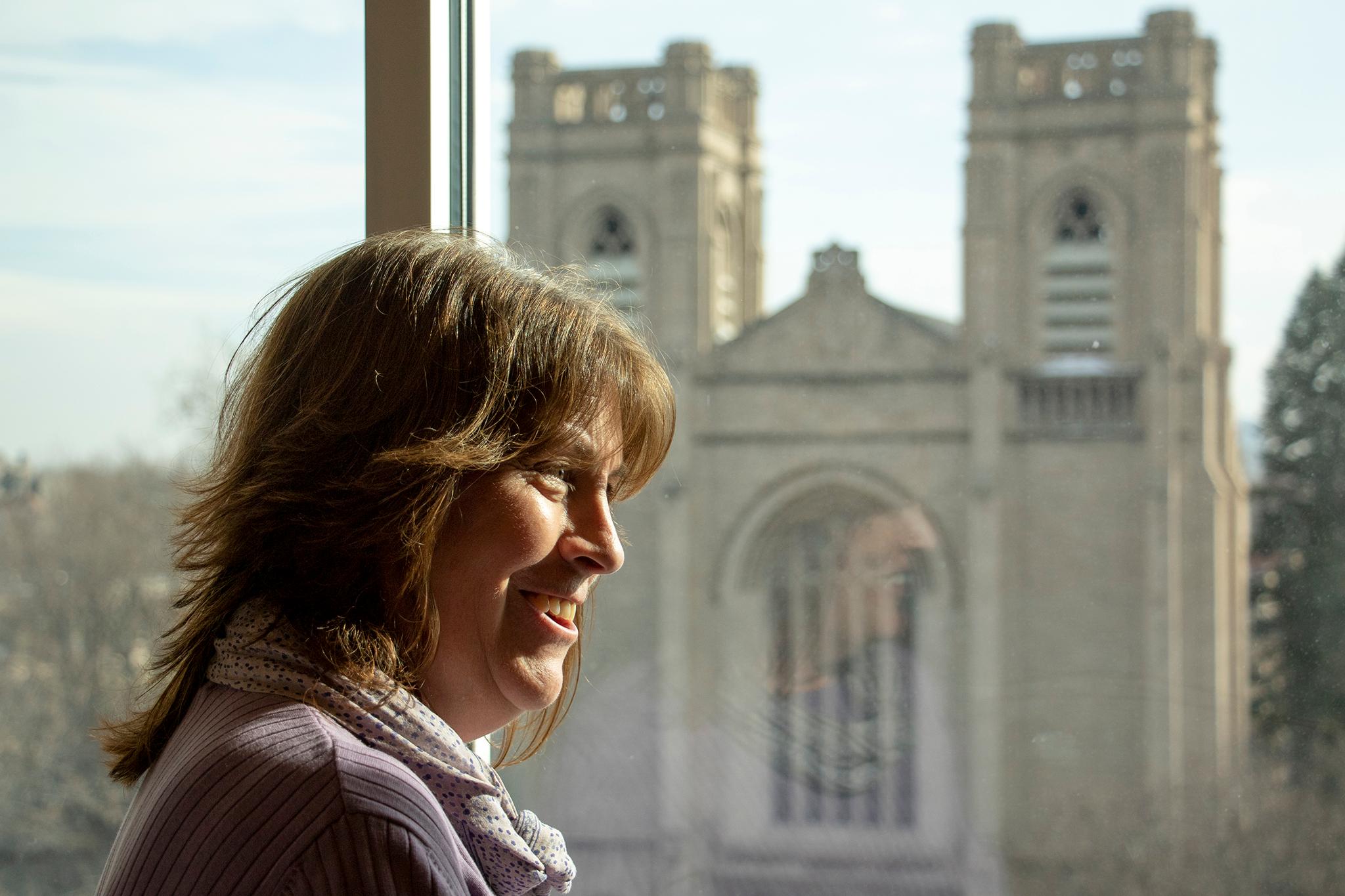
Carfrae was at DU with another Catholic Worker volunteer, Jossy Eyre. In 1989 Eyre, in space at The Gathering Place, started the Women's Bean Project. That nationally recognized social enterprise, still active and based in Denver, tries to break the cycle of poverty by training women in its own manufacturing business, producing bean soup mixes and other products.
Carfrae is now director of housing at Saint Francis Center, helping people who have experienced homelessness get housing and other support.
"Things from the Catholic Worker definitely influence how I run this place," Carfrae said from her office in a block of affordable apartments in the Argonaut parking lot in Capitol Hill.
She thinks back to conversations at the dinner table like those the Birkys remember and those that encouraged her to start The Gathering Place. Carfrae tries, she says, to have such conversations with Saint Francis residents, helping them rebuild connections to society that many people lose when they are homeless. Carfrae said her social worker training helps her encourage others to open up. So has reading Day. And, she said, "hanging around people like Anna Koop, because she's a master at that kind of conversation."
"It all happened while we sat there talking, and it is still happening."
-- Day, The Long Loneliness
When alums of Denver's Catholic Worker reminisce, they often mention the first Day book they read.
Hyde was 15 and hitchhiking around the country, spending time at places like an anarchist book shop on Santa Fe. A volunteer at the shop who knew he had a religious background -- his father had been a Protestant missionary -- recommended he read Loaves and Fishes, Day's history of the Catholic Worker movement.
"I was some weird, anarchist punk who thought about God sometimes," Hyde said.
He went on to read more Day and develop a first-name-basis relationship.
"She helped me stay sane many times with her own insanity," Hyde said. "Some of Dorothy's books will make you fall in love with her and want to give up all your possessions. Others will make you think she's weird."
In 2011, a few years after he took that book recommendation from an anarchist, he found himself in Denver again and learned the Catholic Worker house had room for a live-in worker. He moved in and over the next few years learned something of the benefits and drawbacks of the social experiment that has long outlived Dorothy.
"Being in community, there's always inconveniences," said Hyde, who in recent years left the house and Denver for North Carolina. His wife Kristen Brunelli, whom he met when she came to the Denver Catholic Worker as a volunteer, is studying writing there. Hyde is a community organizer working with people living in homelessness. Koop married the couple in 2017. When they visit Colorado these days, they often babysit for a couple whose child was born at the house when Hyde and Brunelli were volunteers there.
"Catholic Worker is part of our family."
"To tell you the truth I had more fun living at the Catholic Worker than I ever did at a traditional nonprofit," he said. "At the Catholic Worker, you're not trying to fix people like you are at other service providers."
Still, the ideal of treating everyone and their needs equally could be trying in practice.
"It's difficult making decisions with other people," Hyde said. "Especially in a Catholic Worker, anarchist, consensus sort of decision-making process."
He laughed, thinking back to lengthy, careful conversations about small matters, such as whether to buy a kind of margarine Koop happened to like or the organic butter a younger live-in volunteer preferred.
Still, it was conversations that led to Hyde and several other residents at 2420 Welton in 2012 forming Denver Homeless Out Loud, an advocacy group that seeks to ensure people living in homelessness have a say in policies and projects that affect them.
Benjamin Dunning, another co-founder of Denver Homeless Out Loud, isn't a big Day reader. Instead, Dunning says he learned about Catholic Worker thinking by observing friends like Hyde.
Dunning had been homeless in Denver for several months when he met Hyde, years before either knew of the Catholic Worker house. Hyde welcomed Dunning, who was older, into a squat in Baker that was home to a group of teens. Looking back, Dunning said it gave him a sense of belonging that many people experiencing homelessness lose.
"I got taught to live in community by a bunch of train-riding, crusty punks," Dunning said.
When one of those punks grew up and moved into the Catholic Worker house, Dunning was invited to what's known among Workers as clarification of thought sessions. Or as Dunning describes it with fond humor: "They sit around at lunchtime and talk."
Then he grows serious: "That's how it all happens. People sit around and talk."
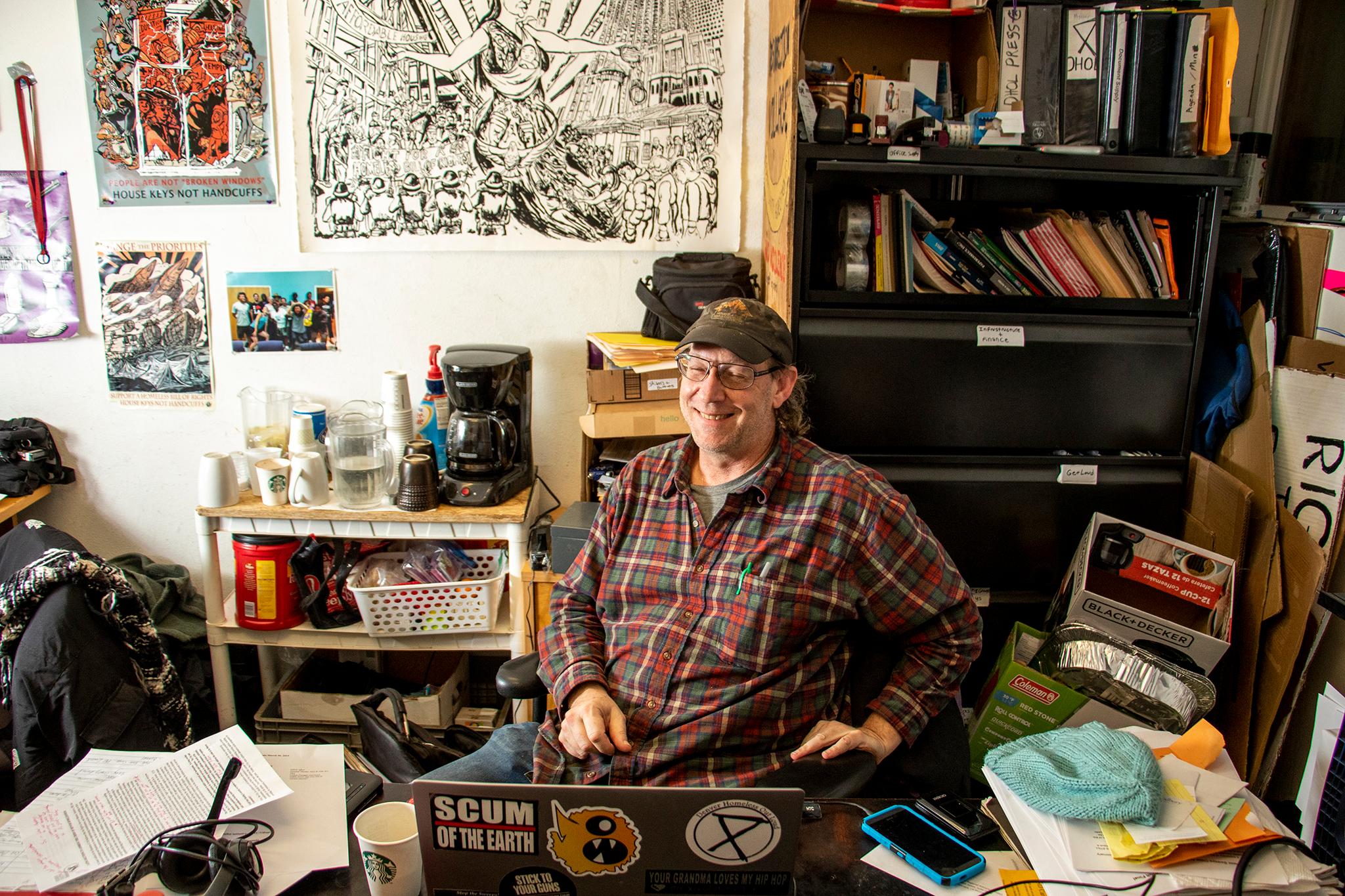
About a year after he helped found Denver Homeless Out Loud, Dunning was asked if he wanted a room in the basement at the house. Traditionally, the upstairs rooms for guests had been reserved for families and women who would spend a few months getting back on their feet. The basement rooms were usually taken by single men experiencing homelessness who stayed long-term and offered some stability and security, though they were not considered live-in volunteers.
"Somewhere between worker and guest, that's the world I lived in," Dunning said. "I was someone they trusted."
He believes his involvement with Denver Homeless Out Loud was one of the reasons he was invited into 2420 Welton. Following the fire there he moved into the new house, where he will take on a live-in worker role once the red tape is sorted out.
"I want to keep the community together as much as possible," he said. "The Catholic Worker movement is a different kind of idea about how you bring people together and how you work on issues like poverty and housing."
"Going to the people is the purest and best act in Christian tradition and revolutionary tradition and is the beginning of world brotherhood."
-- Day, The Long Loneliness
The day Dunning's friend Hyde was offered a Day book at a shop on Santa Fe, he later hopped on the light rail without paying. As chance would have it, he got kicked off on Welton Street. He saw a woman sweeping the front porch of a house that had a sign identifying it as a refuge run by Catholic Workers. Though he had only just learned about the movement, he approached the woman with youthful cockiness.
"I asked her all these young, angsty, accusatory type of questions," Hyde recalled. "'How the hell can you be a Catholic and an anarchist?'
"She just answered calmly and sweetly, She had this very simple way of explaining that to her Catholicism and religion were about living with mercy."
She was Sue Gomez, a resident of 2420 Welton from 2001 to 2008, one of the longest tenures for a live-in volunteer who is not Koop. These days Gomez, a former nurse and church secretary, volunteers at Denver Health visiting patients. She also occasionally performs with the Romero Theater Troupe, which brings the real-life stories of Denverites to stage, exploring themes such as immigration and poverty. She's in the current production, about the Denver teachers strike. She lives in Cole in a space off the prayer room in another communal house, one where Catholic missionaries often stay on the way to or from foreign posts. She plans to cook a meal once a week at the new Catholic Worker hospitality house.
Gomez first encountered Catholic Workers when her husband was seriously ill. They read an article describing the Catholic Worker tradition of building coffins, which dates to the days of Day and Maurin. Gomez's husband told her he wanted a Catholic Worker coffin, and she arranged for him to have one when he died a few years later.
Then, she went on a Catholic mission to Mexico, something she and her husband had once discussed doing together. Her two grown sons were supportive of that decision, as they were when she returned to Denver and moved into 2420 Welton.
"I have a real desire to be with the poor," Gomez said. "I follow Jesus and that's what Jesus did."
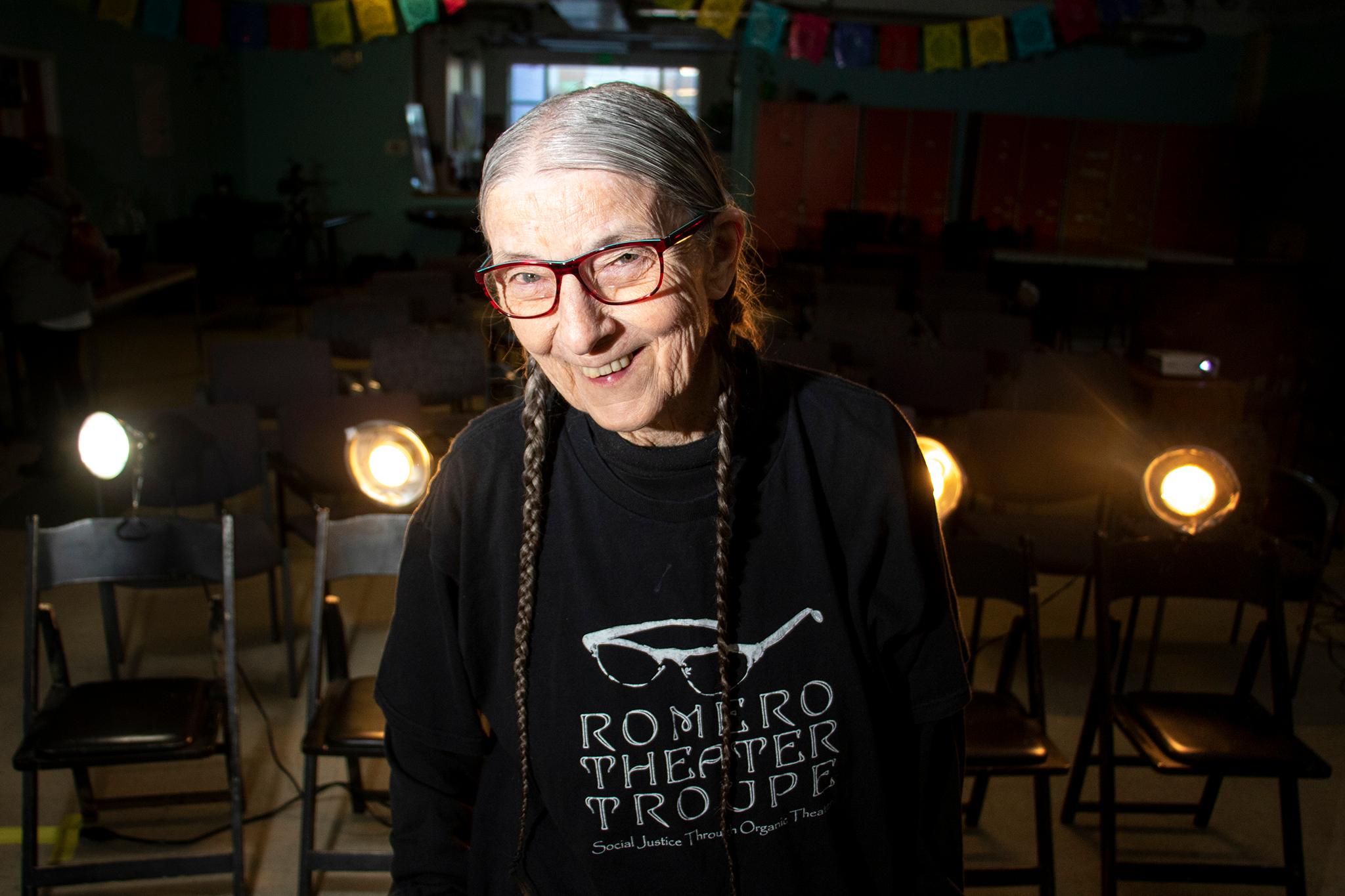
Life at the Catholic Worker house could be challenging. The community imposed few rules -- Koop said few were necessary in such a small group. Guests who were violent or disruptive would be asked to leave, a task Gomez did not enjoy.
Then there were moments like a Saturday morning when, from her room on the second floor, Gomez could hear a family staying at the house as guests having a difficult morning. The father was trying to calm his crying 2-year-old son. He told the boy gently that it was time to wash his face. Gomez heard them go into the bathroom, and the father say, "I'm going to put you on my shoulders." The boy stopped crying.
Years later, Gomez said, she's still inspired by "that image of putting someone up from suffering to where they can see the light."

